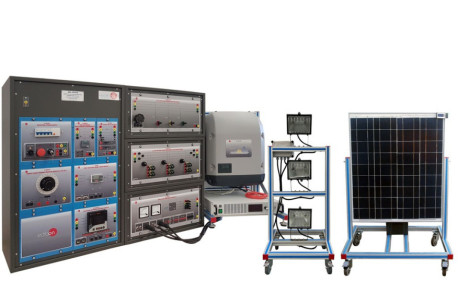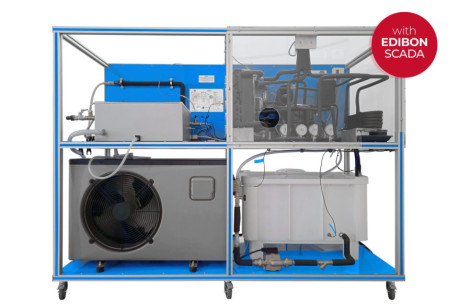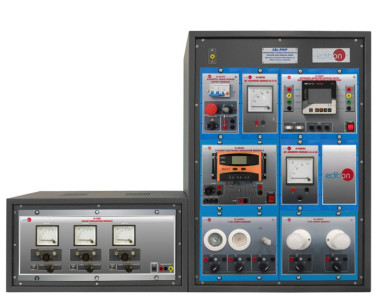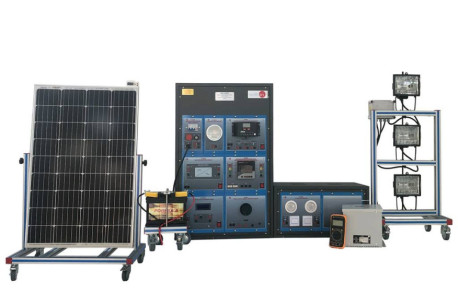- Home
- Products
- 1.- PHYSICS
- ACADEMIC PROGRAMS
- HIGHER TECHNICAL EDUCATION
- FOOD ENGINEERING
- TOPOGRAPHIC ENGINEERING
- GEOLOGY
- FOREST ENGINEERING
- ENVIRONMENTAL ENGINEERING
- ECOLOGICAL ENGINEERING
- TEXTILE ENGINEERING
- ENGINEERING FOR AGRICULTURAL INDUSTRIES
- MECHANICAL ENGINEERING
- CHEMISTRY
- CHEMICAL ENGINEERING
- PROCESS ENGINEERING
- GEOLOGICAL, MINES AND OIL ENGINEERING
- PETROLEUM TRAINING CENTER
- NAVAL ENGINEERING
- AGRICULTURAL ENGINEERING
- ELECTRONICS ENGINEERING
- ARCHITECTURE
- COMPUTER SCIENCE & ENGINEERING
- NUCLEAR ENGINEERING
- AUTOMATIC ENGINEERING
- ENERGETIC ENGINEERING
- ENERGY TRAINING CENTER
- ELECTRICAL ENGINEERING
- SYSTEMS ENGINEERING
- AERONAUTICAL ENGINEERING
- OCEAN ENGINEERING AND MARINE SCIENCES
- PHYSICS
- INDUSTRIAL ENGINEERING
- INTERNATIONAL CENTER FOR TECHNICAL TRAINING, DEVELOPMENT AND RESEARCH
- MATERIALS ENGINEERING
- METALLURGICAL ENGINEERING
- CIVIL ENGINEERING
- TELECOMMUNICATION ENGINEERING
- THERMAL ENGINEERING
- TECHNICAL AND VOCATIONAL TRAINING
- ELECTRONICS
- COMMUNICATIONS
- ELECTRICITY
- COMPUTER SCIENCE
- AUTOMOTIVE TECHNOLOGY
- CIVIL ENGINEERING
- MECHANICAL AND MANUFACTURE
- MECHANICAL AND METAL
- FLUID MECHANICS
- REFRIGERATION AND AIR CONDITIONING
- INDUSTRIAL CHEMISTRY
- CHEMISTRY
- FOOD TECHNOLOGY
- AGRICULTURAL
- AGROINDUSTRY
- MAINTENANCE
- MARITIME AND FISHERY
- AERONAUTICAL MAINTENANCE
- INSTRUMENTATION AND CONTROL
- ENVIRONMENTAL
- TECHNOLOGY
- CONSTRUCTION TECHNOLOGY
- ELECTROMECHANICAL TECHNOLOGY
- STRUCTURAL DESIGN TECHNOLOGY
- INDUSTRIAL PRODUCTION TECHNOLOGY
- INFORMATION TECHNOLOGY
- QUALITY CONTROL
- ENERGY SYSTEMS TECHNOLOGY
- MINING AND PETROLEUM TECHNOLOGY
- NATURAL GAS TECHNOLOGY
- RENEWABLE ENERGY
- TELECOMMUNICATIONS TECHNOLOGY
- MECHANICAL TECHNOLOGY
- WIND TECHNOLOGY
- NUCLEAR TECHNOLOGY
- PROCESS CONTROL TECHNOLOGY
- GENERAL SERVICES TECHNOLOGY
- LABORATORY TECHNOLOGY
- AUTOMATION AND MECHATRONICS
- TRANSPORTATION AND LOGISTICS
- HIGHER TECHNICAL EDUCATION
- 2.- ELECTRONICS
- 3.- COMMUNICATIONS
- 4.- ELECTRICITY
- 5.- ENERGY
- 5.1.- SMART GRIDS AND POWER SYSTEMS
- 5.2.- MICROGRIDS
- 5.3.- RENEWABLE ENERGIES
- 5.3.1.- PHOTOVOLTAIC SOLAR ENERGY
- 5.3.2.- SOLAR THERMAL ENERGY
- 5.3.3.- WIND ENERGY
- 5.3.4.- MARINE ENERGY
- 5.3.5.- GEOTHERMAL ENERGY
- 5.3.6.- HYDRAULIC ENERGY
- 5.3.7.- BIOFUELS
- 5.3.8.- STORAGE SYSTEMS
- 5.3.9.- HYDROGEN FUEL CELLS
- 5.3.10.- STEAM TURBINES AND ORGANIC RANKINE CYCLES
- 5.3.11.- OTHER NON-CONVENTIONAL SYSTEMS
- 5.4.- CONVENTIONAL ENERGIES
- 5.5.- ENERGY STORAGE
- 5.6.- HIGH VOLTAGE AND ELECTRICAL PROTECTION SYSTEMS
- 5.7.- INSTALLATIONS AND MAINTENANCE
- 6.- MECHATRONICS & AUTOMATION
- 7.- MECHANICS
- 8.- FLUID MECHANICS
- 9.- THERMODYNAMICS & THERMOTECHNICS
- 9.1.- FUNDAMENTALS AND BASIC CONCEPTS OF THERMODYNAMICS
- 9.2.- HEATING, VENTILATION, AIR CONDITIONING AND HOT WATER
- 9.3.- HEAT PUMPS
- 9.4.- REFRIGERATION
- 9.5.- THERMAL HYDRAULIC PIPING SYSTEM
- 9.6.- HEAT TRANSFER
- 9.7.- HEAT EXCHANGERS
- 9.8.- THERMAL MACHINES
- 9.9.- INTERNAL COMBUSTION ENGINES
- 9.10.- INSTALLATIONS AND MAINTENANCE
- 10.- PROCESS CONTROL
- 11.- CHEMICAL ENGINEERING
- 11.1.- UNIT OPERATIONS
- 11.1.1.- FLUIDIZATION
- 11.1.2.- EVAPORATION
- 11.1.3.- BOILING
- 11.1.4.- DISTILLATION AND CRACKING
- 11.1.5.- EXTRACTION
- 11.1.6.- DIFFUSION
- 11.1.7.- DRYING AND COOLING
- 11.1.8.- ABSORPTION AND ADSORPTION
- 11.1.9.- ION EXCHANGE AND CORROSION
- 11.1.10.- CRYSTALLIZATION AND PYROLYSIS
- 11.1.11.- FILTRATION, SEDIMENTATION AND MIXING
- 11.1.12.- SOLIDS TREATMENT
- 11.2.- CHEMICAL REACTORS
- 11.1.- UNIT OPERATIONS
- 12.- FOOD & WATER TECHNOLOGIES
- 13.- ENVIRONMENT
- 14.- BIOMEDICAL ENGINEERING
- 14.1.- BIOMECHANICS
- 14.1.1.- MECHANICS FUNDAMENTALS KITS
- 14.1.2.- SIMPLE MACHINES
- 14.1.3.- STATICS AND DYNAMICS
- 14.1.4.- VIBRATIONS AND OSCILLATIONS
- 14.1.5.- TRIBOLOGY (FRICTION, WEAR, LUBRICATION)
- 14.1.6.- STRUCTURAL MECHANICS
- 14.1.7.- PHOTOELASTICITY AND STRAIN MEASUREMENT
- 14.1.8.- MECHANICAL TESTS
- 14.1.9.- THERMAL AND ACOUSTIC TESTS
- 14.2.- BIOMEDICAL ELECTRONICS
- 14.3.- BIOMEDICAL EQUIPMENT
- 14.1.- BIOMECHANICS
- LABORATORY ACCESSORIES
- CUSTOMIZED PILOT PLANTS
- MODULES
- EXPANSIONS
- LABORATORIES
- Lines of Business
- Technology
- Downloads
- About us
- News
- Contact us
What is the Green Hydrogen?

Hydrogen is not a primary energy source but an energy carrier, it requires a chemical process for its production. Green hydrogen is generated by a chemical process known as electrolysis. This method uses electric power to break the water molecule, generating hydrogen and oxygen in the process. There are different electrolytic technologies, mainly divided into four types: conventional alkaline electrolysis, protonated polymer membrane electrolysis (PEM), anion exchange polymer membrane electrolysis (AEM) and solid state electrolysis (SOE).
Green hydrogen generation currently accounts for only 0.1% of overall hydrogen production. This way of obtaining green hydrogen would save the 830 million ton of CO2 per year that are generated when this gas is produced by fossil fuels. EDIBON is therefore firmly committed to the development and optimization of this technology with great potential for transforming the industrial sector.
Advantages and disadvantages of Green Hydrogen
Green hydrogen is a 100% sustainable technology, with easy storage and transport due to the lightness of the hydrogen molecule. This technology offers great versatility and can be transformed into electricity or other synthetic fuels for mobility, commercial and industrial use, with great potential to complete the transition from a fossil fuel-based industry to a green, environmentally friendly and highly efficient industry.
Problems associated with the use of hydrogen include high energy consumption and increased safety costs due to its highly volatile and flammable nature


-1.png)
Works at EDIBON
From EDIBON we have detected the great potential that the use of green hydrogen implies in the future, thanks to our great experience in the educational sector, using the most advanced technology for more than 40 years, we have developed different units that allow its study in depth and demonstrate its technical principles of operation, such as the AEL-SAPV, AEL-PHIP, EG5C, AEL-PHVG units.
At EDIBON we consider green hydrogen to be a great opportunity for the future, as due to its advantages, it can be used in almost all sectors that currently depend on fossil fuels, from the domestic and mobility sector to the industrial sector, completely transforming the way energy is obtained.
 Cookie preferences
Cookie preferences




